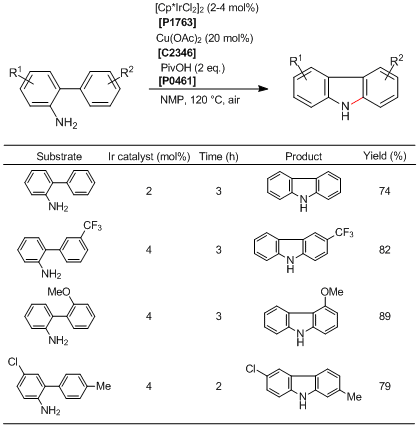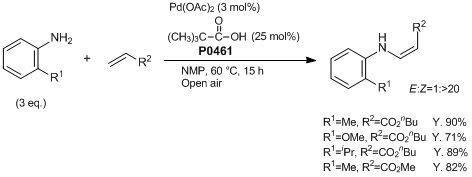Sign up for free shipping on all website orders, no minimum required, and get exclusive coupons!
Users can now ask questions to the AI chatbot by clicking the chatbot icon in the bottom-right corner of the website.
Maximum quantity allowed is 999
* Items in stock locally typically ship the same day of ordering. Items from Japan stock are able to ship from a US warehouse within 2 weeks after ordering. For additional estimated shipment times, please refer to the Shipping Simulation tool. Note: Excludes regulated items and items that ship on ice.
* To send your quote request for bulk quantities, please click on the "Request Quote" button. Please note that we cannot offer bulk quantities for some products.
*TCI frequently reviews storage conditions to optimize them. Please note that the latest information on the storage temperature for the products is described on our website.
| Product Number | P0461 |
Purity / Analysis Method 
|
>99.0%(GC) |
| Molecular Formula / Molecular Weight | C__5H__1__0O__2 = 102.13 |
| Physical State (20 deg.C) | Solid |
Storage Temperature 
|
Room Temperature (Recommended in a cool and dark place, <15°C) |
| CAS RN | 75-98-9 |
| Reaxys Registry Number | 969480 |
| PubChem Substance ID | 87574655 |
| SDBS (AIST Spectral DB) | 3139 |
| Merck Index (14) | 7511 |
| MDL Number | MFCD00004194 |
| Appearance | White or Colorless to Almost white or Almost colorless powder to lump to clear liquid |
| Purity(GC) | min. 99.0 % |
| Purity(Neutralization titration) | min. 98.0 % |
| Freezing point | 32.0 to 36.0 °C |
| Melting Point | 34 °C |
| Boiling Point | 164 °C |
| Solubility in water | Slightly soluble |
| Degree of solubility in water | 25 g/l 20 °C |
| Pictogram |



|
| Signal Word | Danger |
| Hazard Statements | H302 + H312 : Harmful if swallowed or in contact with skin. H314 : Causes severe skin burns and eye damage. H371 : May cause damage to organs. H402 : Harmful to aquatic life. H290 : May be corrosive to metals. |
| Precautionary Statements | P501 : Dispose of contents/ container to an approved waste disposal plant. P273 : Avoid release to the environment. P260 : Do not breathe dust. P270 : Do not eat, drink or smoke when using this product. P234 : Keep only in original container. P264 : Wash skin thoroughly after handling. P280 : Wear protective gloves/ protective clothing/ eye protection/ face protection. P390 : Absorb spillage to prevent material damage. P308 + P311 : IF exposed or concerned: Call a POISON CENTER/doctor. P303 + P361 + P353 : IF ON SKIN (or hair): Take off immediately all contaminated clothing. Rinse skin with water/shower. P301 + P330 + P331 : IF SWALLOWED: Rinse mouth. Do NOT induce vomiting. P363 : Wash contaminated clothing before reuse. P301 + P312 + P330 : IF SWALLOWED: Call a POISON CENTER/doctor if you feel unwell. Rinse mouth. P304 + P340 + P310 : IF INHALED: Remove person to fresh air and keep comfortable for breathing. Immediately call a POISON CENTER/doctor. P305 + P351 + P338 + P310 : IF IN EYES: Rinse cautiously with water for several minutes. Remove contact lenses, if present and easy to do. Continue rinsing. Immediately call a POISON CENTER/doctor. P406 : Store in corrosive resistant container with a resistant inner liner. P405 : Store locked up. |
| RTECS# | TO7700000 |
| UN Number (DOT-AIR) | UN3261 |
| Class (DOT-AIR) | 8 |
| Packing Group (TCI-A) | II |
| HS Number | 2915.90.1800 |


The requested SDS is not available.
Please Contact Us for more information.
A sample C of A for this product is not available at this time.

The requested analytical chart is not available. Sorry for the inconvenience.